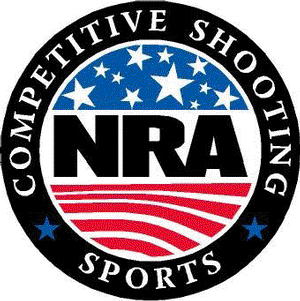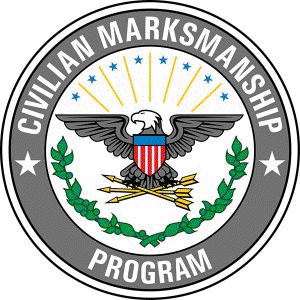

PRECISION PISTOL
(Bullseye)


|
Match Director |
Adam Kopstein |
|
|
Assistant |
Ron Roselli |




 2025 PRECISION PISTOL MATCHES
2025 PRECISION PISTOL MATCHES 
 CMP COMPETITION RULEBOOKS
CMP COMPETITION RULEBOOKS 




Bullseye Pistol, also known as Precision Pistol is one of the oldest and most popular pistol shooting sports. The first Bullseye matches were held at the National Matches in 1941. Within one of the two sponsoring organizations alone (National Rifle Association) there are 42,000 classified Bullseye shooters.
Bullseye is fired one-handed from a standing position at either stationary or turning targets. Because emphasis is placed on sight alignment and trigger control, Bullseye shooting is a great way to master pistol fundamentals, which then carry over to other shooting sports. Many shooters find that their rifle scores improve as a result of their Bullseye pistol participation.
There are three stages to a Bullseye match. Slow Fire consists of 10 shots fired in ten minutes at a stationary target 50 yards away. (There are no sighter shots in Bullseye). At 50 yards, the 8, 9 and 10 rings are black with the 8 ring measuring 8 inches across and the 10 ring a little larger than 3 inches. Timed Fire consists of 10 shots fired at a 25 yard target in two strings of five shots each within 20 seconds. Rapid Fire consists of 10 shots fired in two strings of 5 shots each within 10 seconds. In Timed and Rapid fire, the targets turn to face the shooter and then turn back when time is up. At 25 yards, the 9 and 10 rings are black, with the 9 ring measuring 5.5 inches across. The combination of all three (thirty rounds) are known as the National Match Course. The annual Presidents 100 Match adds a second string fired at 50 yards for a total of 40 rounds. The targets used for Bullseye matches are listed in Table # 1
Three different pistols are normally used for a full Bullseye match: a 22 rimfire pistol, a center-fire pistol (any caliber larger than .32) and a 45 ACP pistol. For beginners, the entire match may be shot with a 22 rimfire pistol. Many shooters use the 45 ACP for both the centerfire and 45 portions of the match to avoid purchasing a third pistol and to gain experience with the 45. There are also 22 caliber adapters available for the Model 1911 making it possible to shoot the entire match with one gun.
Like any shooting sport, some competitors will spend exorbitant amounts of money on custom-built competition pistols on the theory that you should 'buy all the points you can, because you will have to earn the rest'. This is not necessary. Perfectly good entry-level 22 LR pistols are made by Ruger, Smith & Wesson and others and sell for under $500. In particular, the Smith & Wesson Victory model shoots very accurately and can be found for around $350. The Ruger Mk I or MK II pistols are also very popular for beginners.
Two Organizations sponsor Bullseye Matches. The first organization sponsoring Bullseye matches is The Civilian Marksmanship Program (CMP). It runs the Excellence in Competition (EIC) Program, where shooters earn points toward the Distinguished Pistol Badge. To become Distinguished, you have to accumulate 30 points, including one match where you earn 8 or 10 points. The Distinguished Pistol badge was established in 1891, and since then, about 5000 shooters have earned this badge. At a CMP match, the top 10% of competitors earn 6 points (bronze), 8 points (silver) or 10 points (gold) thru a complicated formula that depends on the number of non-distinguished shooters in the match. To award a one bronze, there must be a minimum of 6 non-distinguished shooters competing. For a match with 16 to 25 shooters, one bronze and one silver are awarded. To award a gold there must be a minimum of 36 shooters. You may shoot up to 5 EIC matches and one National Match each year for points.
In 2015, a Distinguished Rimfire Badge was established, which is shot with the 22 LR pistol. There are presently less than 40 shooters who are Distinguished Rimfire. In addition to the Pistol EIC matches, you may shoot 5 Rimfire and 5 Rifle EIC matches and one National match for each annually.
CMP matches require the use of iron sights. 45 ACP pistols must have a minimum trigger pull of 4 lb and 22 pistols must have a minimum trigger pull of 2 lb. Until 2015, the pistol matches were limited to military calibers and weapons (9 mm Beretta M9 or 92FS and 45 ACP Model 1911). Recent rule changes allow the use of many other pistols 'no smaller than 9 x 19 mm and no larger than .45 ACP' if the particular model is used by military or police agencies, greatly expanding the pool of potential shooters. A list of approved pistols is published in the 2016 CMP Rulebook on pages 34-36 (on this web page)
The second organization sponsoring Bullseye matches is The National Rifle Association. There is no limit to the number of NRA matches that you can shoot each year. NRA matches are also known as 2700 Matches because you shoot 270 rounds in a typical match with a maximum of 10 points possible for each shot. In the history of the sport, no one has ever successfully shot a perfect 2700 score.
A 2700 match starts out with a 22 rimfire match where you shoot two strings of 10 shots each in Slow Fire, then a National Match course, then two 10-round strings each of Timed and Rapid Fire for a total of 90 rounds. This course is then repeated using Center Fire pistols (any caliber .32 or larger) for another 90 rounds, followed by a 90 round 45 ACP match. To obtain a NRA pistol classification of marksman, sharpshooter, expert, master or high master, you only have to shoot 360 rounds (table # 2 ). By firing a 2700 match, it is possible to obtain a classification in less than two matches.
NRA matches are easier to shoot, as they allow the use of telescopic or red-dot sights (but not laser sights.) Minimum allowed trigger pull for 22 rimfire pistols is 2 lb, 2.5 lb for center fire pistols, 2.5 lb for 45 revolvers, and 3.5 lb for 45 ACP semiauto pistols.
NRA Bullseye matches also have a Probationary category, where you shoot at 25 yards and can shoot with both hands. You may obtain a classification up to the level of Expert in probationary matches.
Finally, NRA also sponsors a Distinguished Revolver program. This is shot with a stock (unmodified) revolver in 38 special caliber using 158 grain round nose or semi wadcutter bullets. A single-action trigger pull of 2.5 lb is allowed. Most shooters use a Smith and Wesson model 14 revolver, which comes from the factory with match-grade adjustable sights, or a Colt Python. Distinguished Revolver matches are only held at National, State or Regional pistol matches where a 2700 match is also held. There is no limit to how many Distinguished Revolver matches a shooter can attend each year. A Distinguished Revolver Badge is awarded to shooters who earn 30 points using a system similar to the CMP rules above.
In summary, Bullseye shooting is fun and a great way to develop marksmanship skills. It is not necessary to spend a lot of money to get into the sport. The entire match can be shot with a 22 rimfire pistol. Matches can be set up at 25 yards where shooting with two hands are allowed.
Contact Match Director or his Assistant for more information. (Click on the 'Click Here To Send Email' at the top of the page)